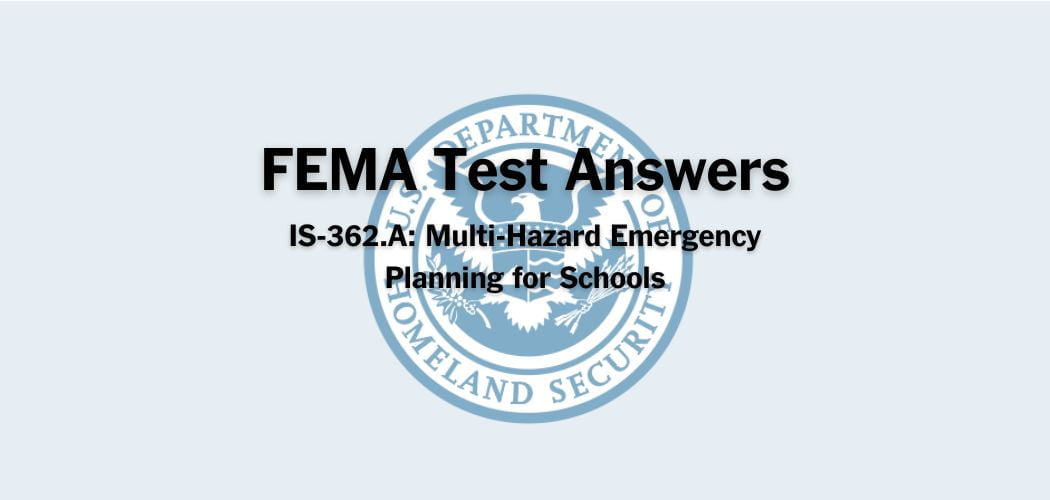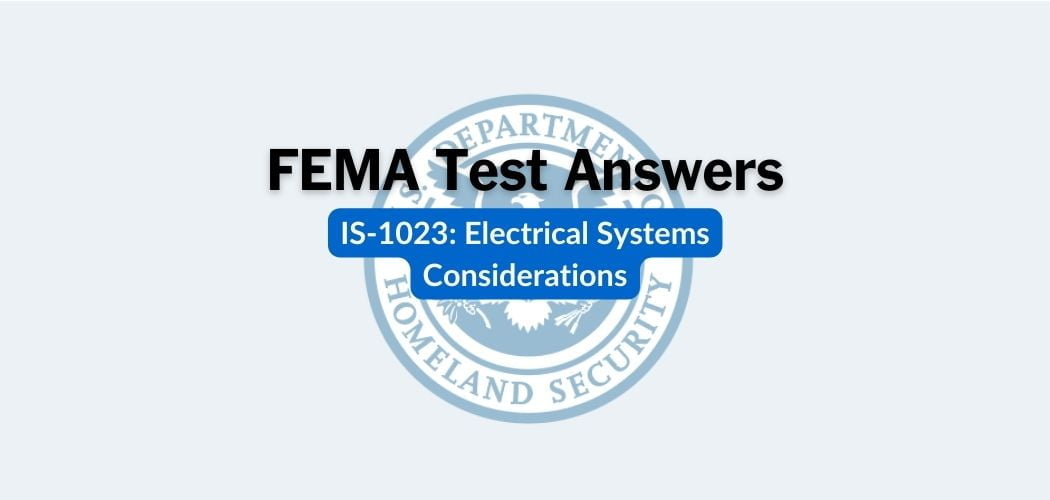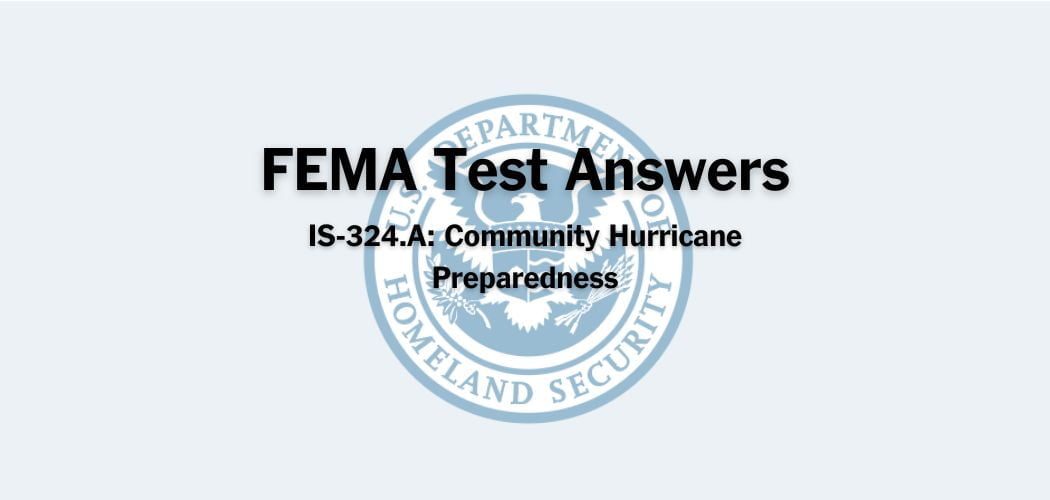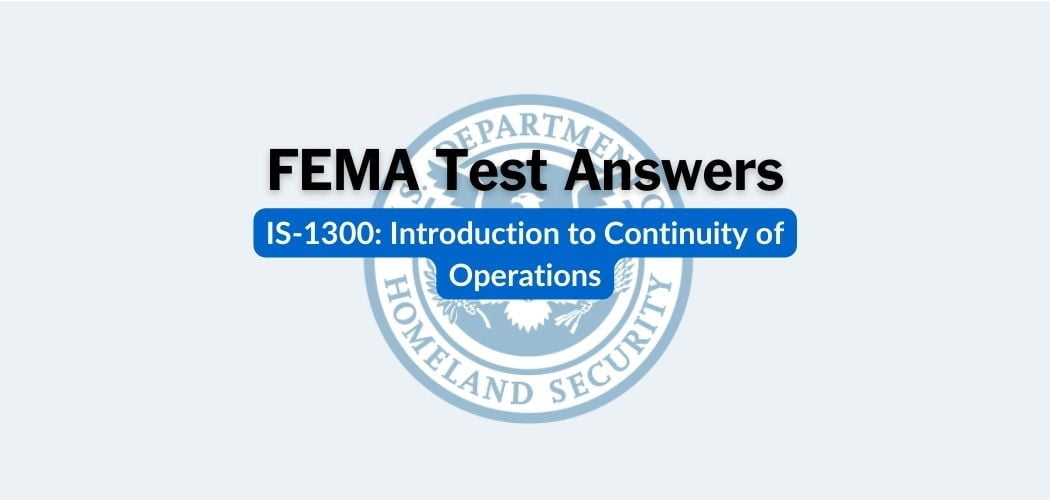Overview: FEMA IS-45 course was published on 7/13/2020 to provide state, local, tribal, territorial (SLTT), and other preparedness partners with an introduction to Continuous Improvement.
FEMA IS-45 course also provides an overview of the Continuous Improvement process, reviews frequently used data collection methods, and provides guidance for building an effective Continuous Improvement Program. The learner must achieve a minimum passing score of 75% on final knowledge assessments or demonstrate mastery on performance assessments or research assignments to earn the IACET CEU.
FEMA IS-45 test answers
Each time that your test is loaded, you will receive a unique set of questions and choices. The test questions are scrambled to protect the integrity of the exam.
Question 1. Which statement best defines Continuous Improvement?
A. Continuous Improvement helps emergency managers to avoid change after incidents and exercises and to better prepare for future disasters.
B. Continuous Improvement helps emergency managers drive change after incidents and exercises and better prepare for future disasters.✅
C. Continuous Improvement helps emergency managers think more carefully about present incidents and exercises.
D. Continuous Improvement helps emergency managers reflect on past issues and identify hopes for the future.
Question 2. Which data collection method allows for in-depth discussion of key issues with subject-matter experts?
A. Information management systems and source databases
B. Feedback forms and surveys
C. Direct observation
D. Interviews✅
Question 3. Why is it important to routinely revisit Continuous Improvement activities?
A. This routine helps to evaluate Continuous Improvement methods and make modifications to make future Continuous Improvement activities more effective.
B. This routine ensures that everyone is involved and committed throughout the organization and helps to maintain strong communications.
C. Continuous Improvement increases the effectiveness of response and recovery efforts by ensuring emergency managers are able to routinely identify strengths, areas for improvement, potential best practices, and mission-critical issues.✅
D. Continuous Improvement helps emergency managers to drive change after incidents and exercises and to better prepare for future disasters.
Question 4. What are the two key elements of Resolution?
A. Reviewing notes from interviews and discussing areas for improvement.
B. Adopting courses of action and holding conversations with senior management.
C. Identifying areas for improvement and conducting an Improvement Planning Workshop.
D. Conducting an Improvement Planning Workshop and developing an action plan.✅
Question 5. What are the essential elements of a Collection Analysis Plan?
A. Brief description of the incident, a statement on the purpose and scope of the effort, priority focus areas, methodology for collecting data, roles and responsibilities, tentative schedule, and potential constraints.
B. Resolution, Discovery, Validation, and Evaluation.
C. Statement on the purpose and scope of effort, priority focus areas, roles and responsibilities, potential constraints, and tentative schedule.✅
D. Priority focus areas, potential constraints, methodology for collecting data, a brief description of the event, roles and responsibilities, tentative schedule, and facilitation guide.
Question 6. Which statement is true about courses of action?
A. They are created in standard operating procedures and become doctrine.
B. They are final policy statements that are mandatorily implemented.
C. They must be completed by the next year.
D. They should be based on validated observations and reviewed by subject-matter experts.✅
Question 7. What is the importance of practicing Continuous Improvement?
A. Continuous Improvement helps emergency managers predict future disasters and proactively be ready to manage any disaster situation.
B. Continuous Improvement increases the effectiveness and training of protection and mitigation mission areas.
C. Continuous Improvement increases the effectiveness of response and recovery efforts by ensuring emergency managers are able to routinely identify strengths, areas for improvement, potential best practices, and mission critical issues.✅
D. Continuous Improvement ensures emergency managers are prepared for any disaster situation and have the right plans in place before incidents occur.
Question 8. What are the two key elements of Discovery?
A. Validating findings and data collection.
B. Planning for collection and collecting data.✅
C. Collection plans and planning to improve core capabilities.
D. Evaluating data results and proposing solutions.
Question 9. What are the two key elements of Validation?
A. Data analysis and reporting.
B. Validating results and data synthesis.✅
C. Planning for collection and collecting data.
D. Evaluating and validating data results.
Question 10. What is the primary purpose for conducting a trend analysis?
A. To conduct analysis during ongoing operations.
B. To compile and review data from multiple sources to identify common issues.
C. To consolidate information from multiple sources into a single, fact-based account of what happened during an incident.
D. To identify recurring strengths or challenges and changes in both over time.✅
Question 11. Which is the best data collection method to use to gather information from a large number of staff?
A. Feedback forms and surveys✅
B. Interviews
C. Documentation review
D. Direct observation
Question 12. What are the qualities that make a successful Continuous Improvement Program?
A. Brief description of the event, statement of the purpose and scope of the effort, priority focus areas, methodology for collecting data, roles and responsibilities, tentative schedule, and potential constraints.
B. Continuous Improvement increases the effectiveness of response and recovery efforts by ensuring emergency managers are able to routinely identify strengths, areas for improvement, potential best practices, and mission critical issues.
C. Obtain commitment throughout the organization, ensure everyone is involved, maintain strong communications, routinely revisit Continuous Improvement activities, and remain patient.✅
D. After-action reports, trend analysis, and decision support products.
Question 13. Which is NOT a goal of an Improvement Planning Workshop?
A. Develop timelines for completing the courses of action.✅
B. Establish the collection analysis priorities for courses of action.
C. Agree on a list of courses of action to take.
D. Identify the entities responsible for implementing the courses of action.
Question 14. Which is one of the common action tracking methods?
A. Tracking resources
B. Incremental milestones✅
C. Trend analysis
D. Cost analysis tracking
Question 15. Which are the three key elements of program management needed for an effective Continuous Improvement Program?
A. Collaboration, change management, and tracking and accountability.✅
B. Recommendation tracking, accountability, and change management.
C. Strong communication, change management, and accountability.
D. Collaboration, communication, and coordination.
Question 16. Strong observations include a discussion of evidence, desired outcomes, courses of action, and what additional element?
A. Background information
B. Topic sentence
C. Description of the impact✅
D. Trend analysis
Question 17. What are the three levels of change management to ensure changes are adopted to drive organizational success?
A. Local-level changes, state-level changes, and national-level changes.
B. Discovery, Validation, and Resolution.
C. Identification of issues, approval of courses of action, and implementation of changes.
D. Individual, group, and organizational.✅
Question 18. Who are all the individuals that can conduct Continuous Improvement activities?
A. Government employees at the federal, state, or local levels.
B. Federal Emergency Management Agency employees.
C. Emergency managers at all levels of government, in the private sector, and in nongovernmental organizations.✅
D. Employees in a Continuous Improvement Program.
Question 19. What are the two key elements of Evaluation?
A. Evaluating observations and information sharing.
B. Action tracking and implementation of courses of action.✅
C. Action tracking and information sharing.
D. Collecting data and information tracking.
Question 20. Which of the following are three primary products used in Continuous Improvement?
A. After-action reports, trend analysis, and decision support products.✅
B. After-action reports, trend analysis, and interview guides.
C. Standard operating procedures, decision support products, and Collection Analysis Plans.
D. Standard operating procedures, decision support products, interview guides, and trend analysis.



